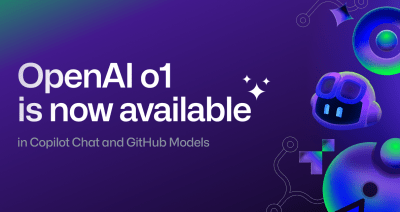Open innovation will be the winning strategy for digital sovereignty and human progress in the new decade
This article originally appeared in The New Stack, and is republished here with permission. Digital sovereignty has become a rallying cry across the globe. In 2021, open innovation will, counterintuitively,…

This article originally appeared in The New Stack, and is republished here with permission.
Digital sovereignty has become a rallying cry across the globe. In 2021, open innovation will, counterintuitively, provide the answer. Politicians and citizens alike want to ensure that the products, services, and data generated in the digital economy respect the sovereignty of national laws and provide local benefit. It’s only reasonable that they look out for their interests. Yet, with the pressing collective challenges confronting the world and the posture of the incoming Biden Administration, 2021 will see a reset towards cautious multilateralism.
The economy, like software, is a collaborative project. Individual contributions bring individual benefits but—significantly—they also bring benefits that spill over to others. Open innovation delivers this on a larger scale. Those who contribute to open source software projects—regardless of where they may originate or be hosted—build technical and collaboration skills that can help land them jobs. These skills have spillover effects that translate into national impact with a more highly-skilled workforce and dynamic start-up scene. All the while, the software code created is a public good, which can be made available across borders without concern of being depleted. This means local businesses and governments alike can use the software free of charge. Developers are also free to use it to build new tools. This can and does, in practice, generate virtuous cycles that improve the lives of people and local communities around the world.
Take, for example, the open source medical image viewer DICOM Web Viewer (DWV). DWV was initially created by a developer based in Spain in 2011, using hundreds of other open source software projects. Flash forward nearly ten years and hundreds of contributions from around the world later—as India rolled out its eSanjeevani telemedicine initiative in 2019 and then accelerated during the pandemic, it relied on DWV’s open source code. Hundreds of thousands of Indians have safely consulted doctors remotely during the pandemic, and have benefited from the global reach of open source software. This is but one example—and a relatively small one at that—of the pervasive and free digital infrastructure created by open source. Insofar as more of the economy comes to resemble the ethos and impact of open source via the open innovation model, these global impacts with local benefit can become the norm.
Methods of open innovation bake in transparency that builds trust, facilitates improvements through increased collaboration and contributions, and results in more robust and usable innovations. In a world where international cooperation is cautious and calculated, open innovation helps keep tabs on developments and their benefits. Interested policymakers can see where [code] contributions are coming from and, in the process, identify organizations that are using the software. Even strategic competitors can cooperate in such transparent contexts—including companies and nations alike. In an age of technological competition, open innovation can widely enact the adage “trust but verify.”
Take, for example, the proliferation of contact-tracing applications in response to the COVID-19 pandemic. Developers open sourced many of these applications, making them transparently available for privacy audits to boost trust. In one case, the open-source BlueTrace protocol was developed by the Singaporean government and subsequently adopted by countries including Australia, Poland, and Canada. Leading international institutions, including the World Health Organization, also facilitate open source collaboration amidst the global health crisis. These open source efforts compliment numerous other important steps public health authorities are taking around the world to combat COVID-19. In these cases, open source facilitated rapid international collaboration, and this approach to open innovation holds promise in numerous fields, ranging from automotive to telecommunications.
Open innovation will provide the model for a new industrial policy in the coming decade. As nations invest in technology and carefully consider how to grow the benefits of shared digital infrastructure while retaining sovereignty, open innovation initiatives will provide the solution to an otherwise challenging dilemma. Yet, local benefits can only flow if global interconnection and global availability of open source collaboration is assured. This means that any nation that limits access or collaboration on open source ultimately cuts that country off from the local benefits of open innovation and threatens to put them at a competitive disadvantage.
This great promise puts the burden on those of us who understand the value of open innovation to help policymakers realize its benefits. That sets out work for us in the open source community to reach out and educate. Thankfully, momentum is building. The European Commission is establishing an Open Source Programme Office to implement its open source strategy. This is a positive step to build much needed expertise in government. Others would benefit from ‘forking’ it, i.e., replicating the project. As we move into the new decade, let us champion open innovation as the quintessential tool for achieving digital sovereignty and driving human progress.
Follow GitHub Policy on Twitter for updates about the laws and regulations that impact developers.
Written by
Related posts

GitHub Availability Report: December 2024
In December, we experienced two incidents that resulted in degraded performance across GitHub services.

Inside the research: How GitHub Copilot impacts the nature of work for open source maintainers
An interview with economic researchers analyzing the causal effect of GitHub Copilot on how open source maintainers work.

OpenAI’s latest o1 model now available in GitHub Copilot and GitHub Models
The December 17 release of OpenAI’s o1 model is now available in GitHub Copilot and GitHub Models, bringing advanced coding capabilities to your workflows.